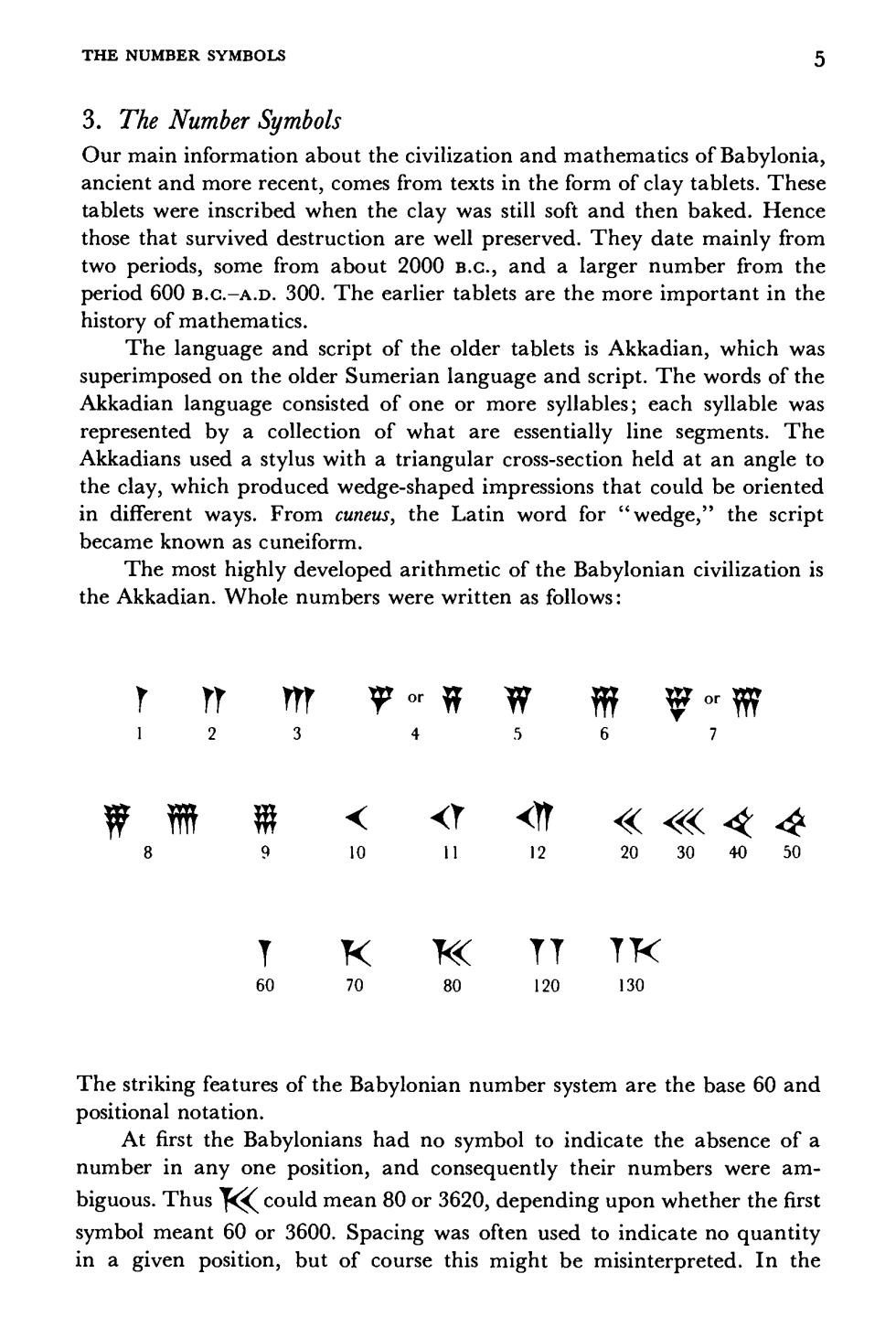正在加载图片...

THE NUMBER SYMBOLS 3.The Number Symbols Our main information about the civilization and mathematics of Babylonia, ancient and more recent,comes from texts in the form of clay tablets.These tablets were inscribed when the clay was still soft and then baked.Hence those that survived destruction are well preserved.They date mainly from two periods,some from about 2000 B.c.,and a larger number from the period 600 B.C.-A.D.300.The earlier tablets are the more important in the history of mathematics. The language and script of the older tablets is Akkadian,which was superimposed on the older Sumerian language and script.The words of the Akkadian language consisted of one or more syllables;each syllable was represented by a collection of what are essentially line segments.The Akkadians used a stylus with a triangular cross-section held at an angle to the clay,which produced wedge-shaped impressions that could be oriented in different ways.From cuneus,the Latin word for "wedge,"the script became known as cuneiform. The most highly developed arithmetic of the Babylonian civilization is the Akkadian.Whole numbers were written as follows: 中or许冲所的o洲 斑《(价 《《冬 10 11 12 20304050 《TTTK 60 70 80 120 130 The striking features of the Babylonian number system are the base 60 and positional notation. At first the Babylonians had no symbol to indicate the absence of a number in any one position,and consequently their numbers were am- biguous.Thus could mean 80 or 3620,depending upon whether the first symbol meant 60 or 3600.Spacing was often used to indicate no quantity in a given position,but of course this might be misinterpreted.In the